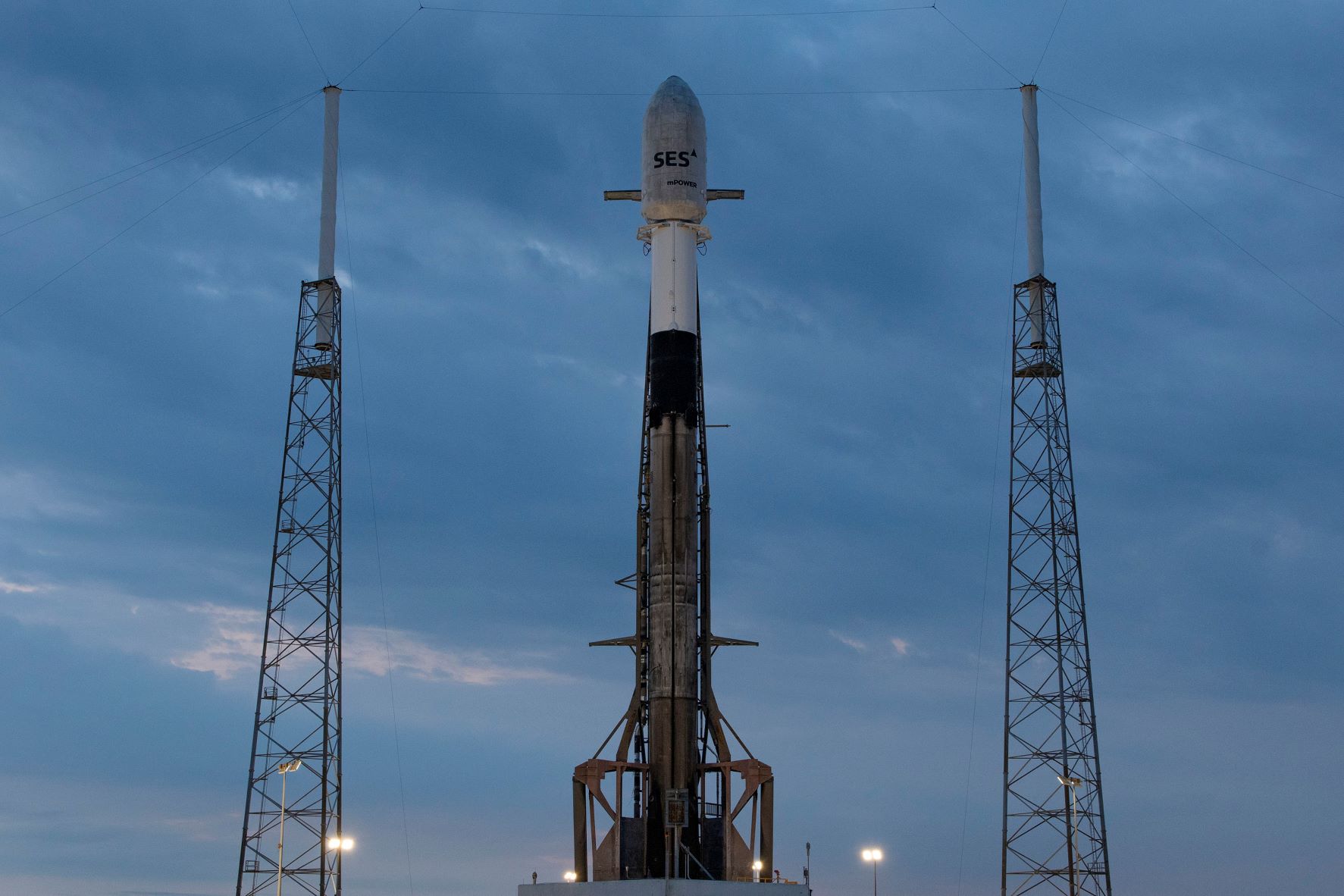Stefan Okhuijzen, Senior Vice President, Information Systems & Services Design and Implementation, SES
EITN: What cloud solutions does SES use internally (for your own operations, etc).
Stefan: Adopting a cloud-first strategy for SES’s internal systems has been pivotal to partner with customers on their own cloud transformation journeys, allowing our customers and ourselves to benefit from greater flexibility and scalability and to be more agile and responsive. To do so, SES has been leveraging Microsoft Azure’s cloud solutions since 2020 to optimise business operations, which includes internal accounting system, data warehouse and business intelligence systems.
A good illustration of how cloud enables greater agility and timesaving at SES is the shift of our processes for rolling out and onboarding new consultants onto the cloud, via Cloud PCs or Virtual Desktop Infrastructures, hence saving us time and costs on shipping laptops, reducing the time spent on onboarding from weeks to only hours.
EITN: What product/service are Azure and SES going to market with?
Stefan: SES works with a number of mega-scale cloud providers, which include AWS, IBM, Oracle and Microsoft. We are part of these providers’ space strategy to ensure our satellites provide the support required to connect their customers’ networks.
We are taking the same approach with our own customers by placing some of our solutions on the cloud. With SES’s Cloud Direct solution, we can create a more secure and dedicated connection from any enterprises or a government site to the cloud that needs more bandwidth-intensive and predictable performance connectivity to run higher value workloads as opposed to the internet connection that you and I use daily.
We are also offering SES Cloud-based Playout solution to our video customers who can speed up the launch of new channels, by eliminating the time needed for hardware delivery traditionally required prior to installation and configuration.
But most importantly, our partnership with Microsoft goes deeper into the cloud-first strategy as four of our second-generation medium Earth orbit (MEO) satellite – O3b mPOWER – gateways are co-located at or near Azure data centres. What does this mean? It means both our customers will mutually benefit from SES’s network being a short hop away from the cloud, while Microsoft will leverage our satellite systems to deliver additional network diversity, service resiliency and gigabit connectivity.
EITN: How does SES leverage cloud to deliver its services to customers?
Stefan: At SES, we are always looking for ways to improve the services we offer to our customers, and with our high-throughput low-latency MEO satellites, we support the performance of their vital cloud services and ensure a seamless connectivity, even in challenging circumstances.
A case in point is our work with Microsoft in Taiwan in 2022, when the Taiwanese government requested a demo solution that would rapidly restore cloud services in a disaster scenario. SES and Microsoft responded to that request, combining the two companies’ connectivity and computing capabilities to demonstrate seamless, satellite-enabled access to critical cloud services during an emergency. The solution enabled the Taiwanese government to establish 5G services through equipping their fire trucks with cameras, providing 4K video transmissions to better facilitate response efforts and ensuring the safety of citizens and emergency personnel.
With our satellites becoming more software-defined and more flexible, we need the same flexibility on the ground. It is expected that virtualisation of modems and gateways will further improve our time to market and improve flexibility, allowing for more advanced use cases including multi-orbit satellite communication solutions.
Our new MEO constellation O3b mPOWER will bring this capacity to new heights, delivering high-speed return paths to support 5G services such as live mobile video capture and video surveillance for military operations.
EITN: Can SES share cost savings from the use of cloud vs. the traditional, non-cloud way?
Stefan: We are tracking our enterprise cloud investments at a deep level, and the move to the cloud has been one of our biggest investments to date and an invaluable cost-effective solution to gain in agility and speediness in our processes. From a financial perspective, although it will take time to evaluate accurately the costs saved by the cloud, we are confident it will reduce costs when compared against on-premises services.
EITN: Could you provide some clarification about the software-defined nature of controls on the ground (to launch, manage, maintain rockets/satellites?)
- How was it set up, what functions have been virtualised?
Stefan: Evolution in satellite technology means that most of our newest high-performance satellites are moving towards the path of software-defined satellites. This means that we will be able to flexibly redirect the satellite beams to wherever we need them to be in real time to meet our customers’ demands. However, because each satellite has hundreds or even thousands of beams, we need to have software systems to help manage their demands in an automated way.
We are tracking our enterprise cloud investments at a deep level, and the move to the cloud has been one of our biggest investments to date and an invaluable cost-effective solution to gain in agility and speediness in our processes. From a financial perspective, although it will take time to evaluate accurately the costs saved by the cloud, we are confident it will reduce costs when compared against on-premises services.
For example, our Adaptive Resource Control (ARC) system – a dynamic software solution managing some of our latest satellites’ capacity – is instrumental in allocating bandwidth surge for customers in a matter of minutes.
- The costs involved to migrate from hardware-based to a more software-defined system?
Stefan: As with the cost benefits highlighted earlier in transitioning to a cloud-first approach – driven by virtualisation and automation – operating more software-based satellites such as SES-17 and O3b mPOWER will enable us to deploy and reconfigure services easily to meet evolving demands of our customers.
- In the bigger scheme of things, what does the use of software-defined systems mean for the industry?
Stefan: Modern software-defined satellites bring new competitive edge, starting with intelligent flexibility and high throughput with multiple gigabits per second at any location, giving organisations the power to completely transform their operations and reap capacity benefits by the terabyte.
With our satellites becoming more software-defined and more flexible, we need the same flexibility on the ground. It is expected that virtualisation of modems and gateways will further improve our time to market and improve flexibility, allowing for more advanced use cases including multi-orbit satellite communication solutions.
Particularly in the Asia Pacific region – with its digital economy set to reach $363 billion by 2025 – market drivers are contributing to unpredictable surges in capacity demand.
For instance, internet service providers will need to dynamically manage payloads across rural and cities alike – without compromising latency or network reach – to ensure all communities benefit in a digital-first economy.








